Research
Surveying with Wilderness Safaris
The Okavango Delta Carnivore Survey is an ambitious survey and therefore requires considerable logistical support, which is why the Conservation Department of Wilderness Safaris agreed to partner with the TKPP team in an effort to survey certain parts of the Okavango Delta. Aside from surveying large carnivores, the survey was the ideal opportunity to also survey some of the lesser known, nocturnal and elusive species.
The survey involved an astounding 180 cameras, placed in a measured grid across various areas, with additional cameras provided by Wilderness Safaris to increase the coverage of the survey. TKPP and Wilderness formed joint teams, who over a period of one week, set up camera trap stations spaced 2km apart across vast areas of true wilderness. Each station consisted of two cameras, each placed on either side of a road or a prominent game trail, which worked 24 hours to record all species that crossed their path using motion-triggered sensors. This twin camera system allows for capture of both sides of target animals, which for carnivores, assists in individual identification. The number of individually identified animals recorded in the traps can then be used to produce density estimates of the target species, which is of considerable value for large carnivore conservation in the region.

A lioness of a known pride is captured by both cameras. Lions can be individually identified using whisker spot patterns, which are unique to each individual
Running a camera trap survey not only involves setting up cameras and taking them down, but also regular checks to ensure cameras are still functional, the batteries are still full, and importantly, that cameras have not been pushed over by animals! As a novel addition to their environment, many species passing by take their time to investigate the camera traps; while in the case of impala and lions this can lead to some interesting ‘selfies’, for the larger species such as elephant and rhino, this often means pushing the traps over, which can lead to losing a few days of data while the cameras are down.
The following highlight how curious some of the animals are:
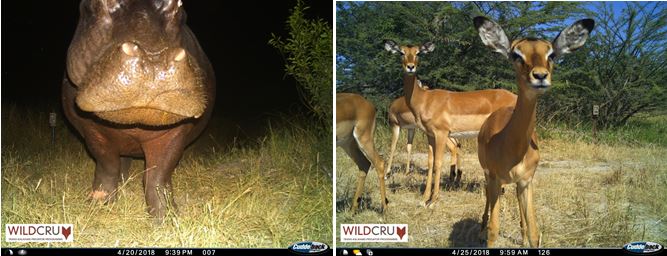
A hippopotamus having a sniff of one of the traps – Impala proved to be one of the more curious species
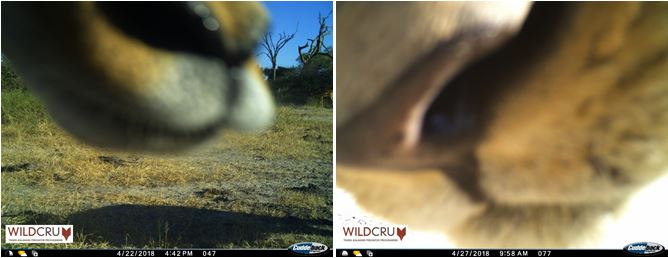
The nose of another impala, giving the camera a good smell – A young lion gets up close and personal
While the main aim of the survey is to survey carnivores, the use of motion-triggered camera traps provided an ideal opportunity to also survey black and white rhino in the Okavango Delta, as part of Wilderness Safari’s ongoing Rhino Monitoring Programme. Particularly for black rhino, camera traps are an ideal way to capture pictures of animals that are by nature nocturnal and very shy. With the assistance of ear notches which make animals individually identifiable.
The following are a selection of images of the more elusive nocturnal species:
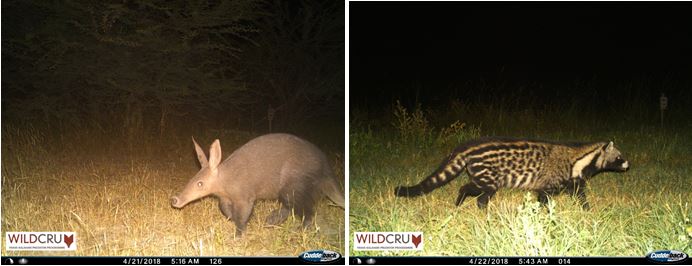
The elusive aardvark and African civet
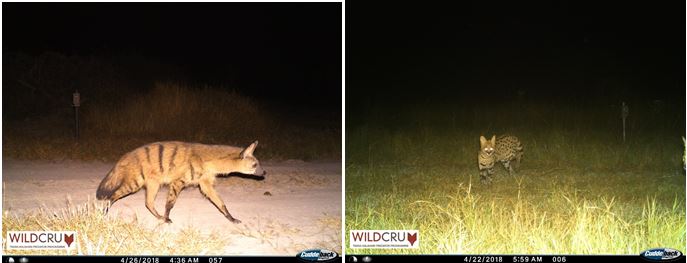
A serval and seldom seen aardwolf
-
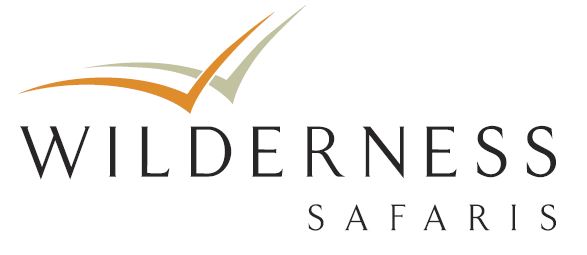
-
 Kylie McQualter from the Conservation Dept. at Wilderness Safaris assisting with the setup
Kylie McQualter from the Conservation Dept. at Wilderness Safaris assisting with the setup -
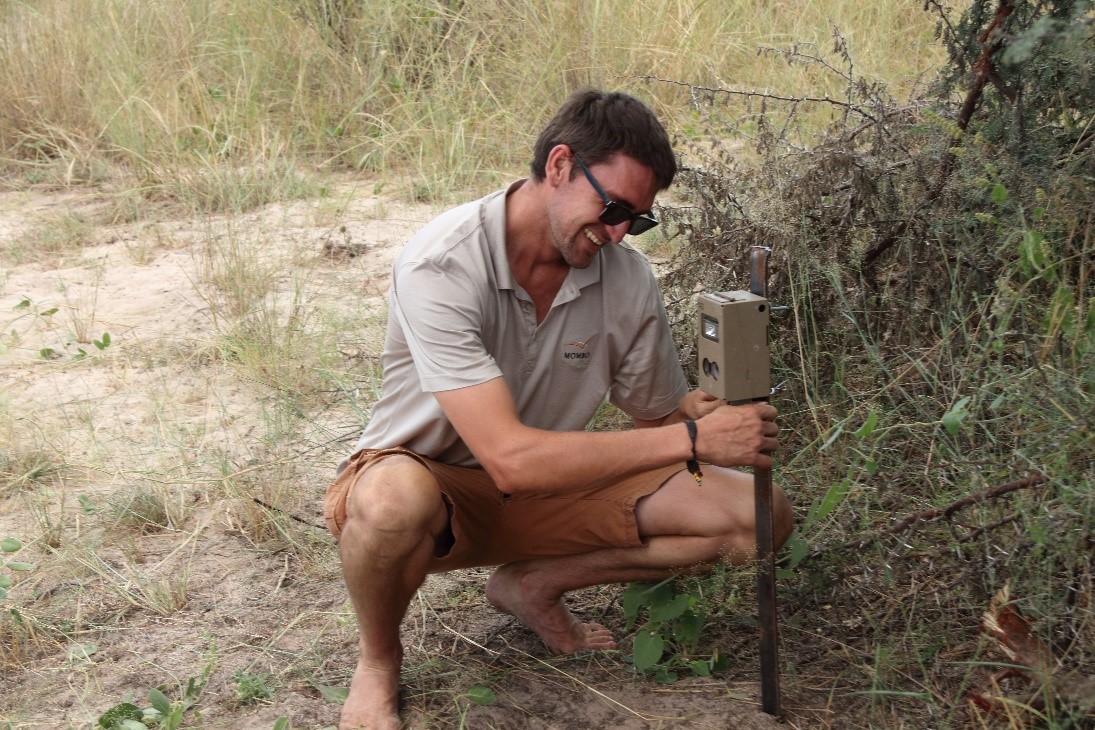 Sebastian Sandenbergh from the Conservation Dept. at Wilderness Safaris
Sebastian Sandenbergh from the Conservation Dept. at Wilderness Safaris -
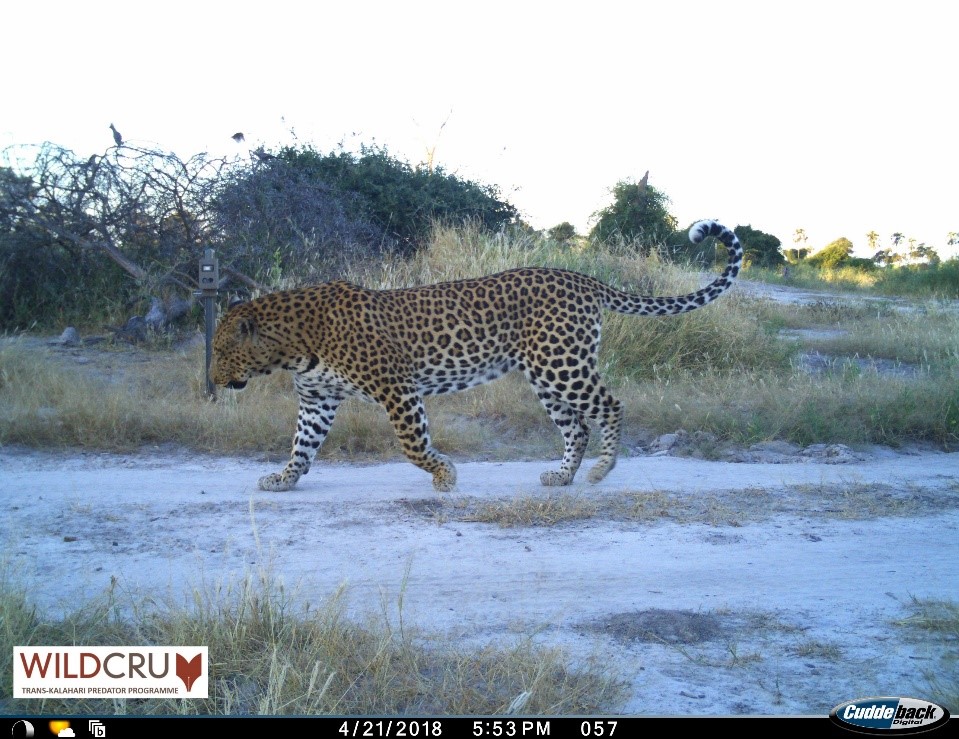 A beautiful male leopard passes through one of the camera traps at dusk
A beautiful male leopard passes through one of the camera traps at dusk -
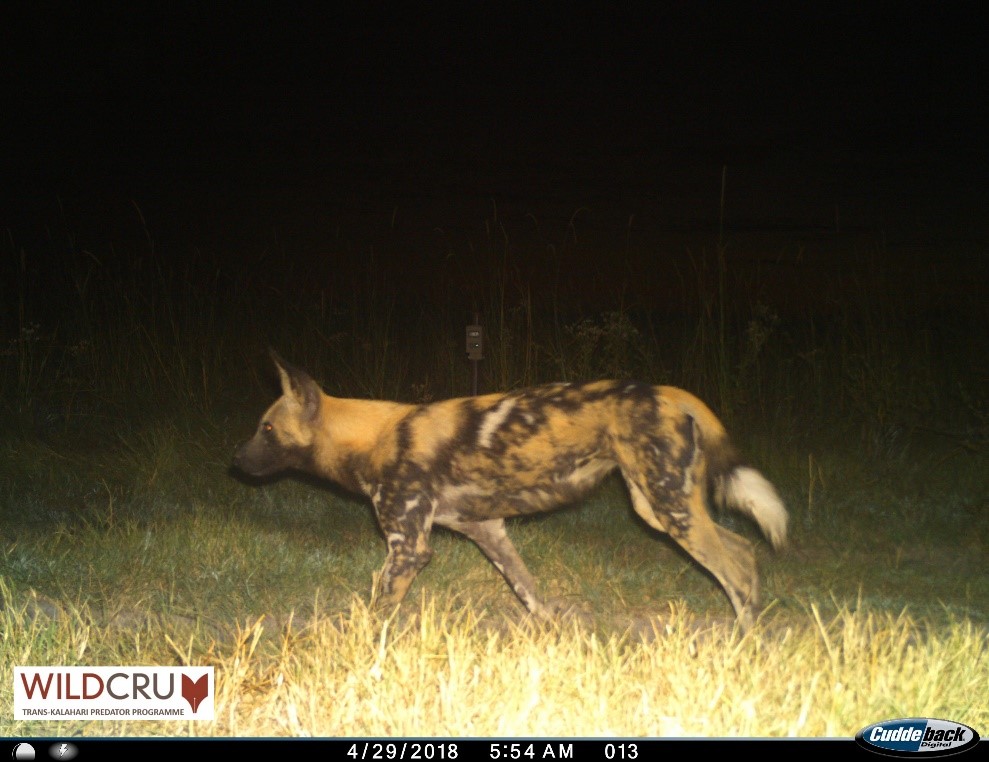 African wild dog. Botswana is one of the strongholds in Africa for this endangered species
African wild dog. Botswana is one of the strongholds in Africa for this endangered species -
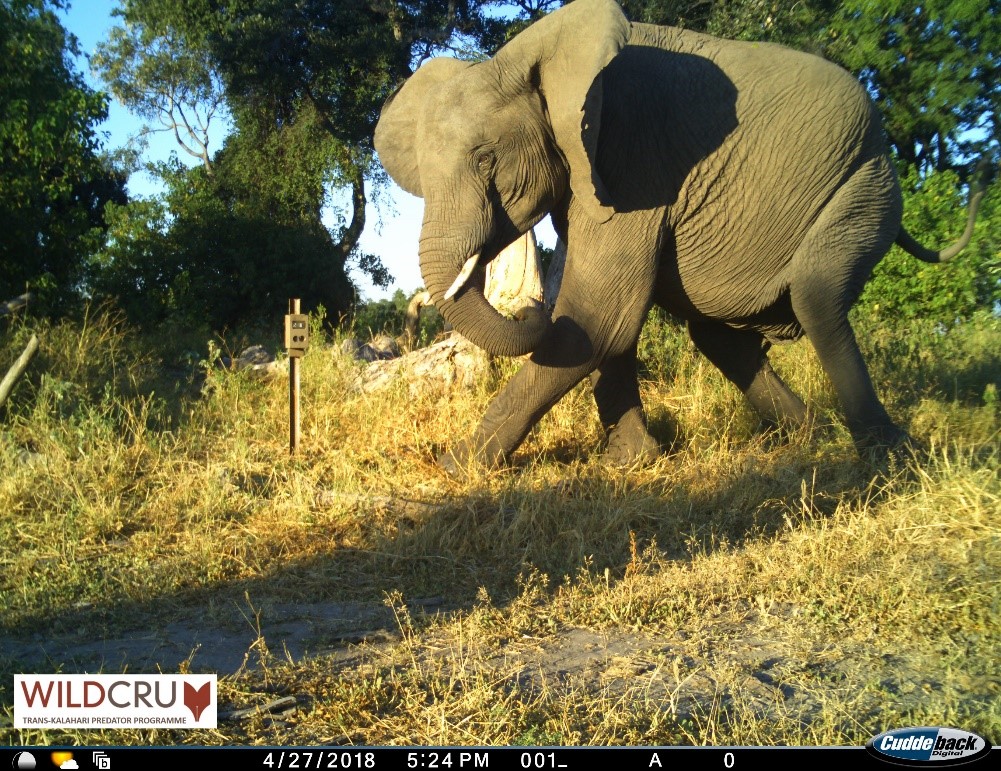 This elephant was not too happy about our camera trap on its path. Many animals use the trails made by elephants through the bush, this makes them ideal locations to place camera trap stations. However it also means cameras regularly get pushed over
This elephant was not too happy about our camera trap on its path. Many animals use the trails made by elephants through the bush, this makes them ideal locations to place camera trap stations. However it also means cameras regularly get pushed over -
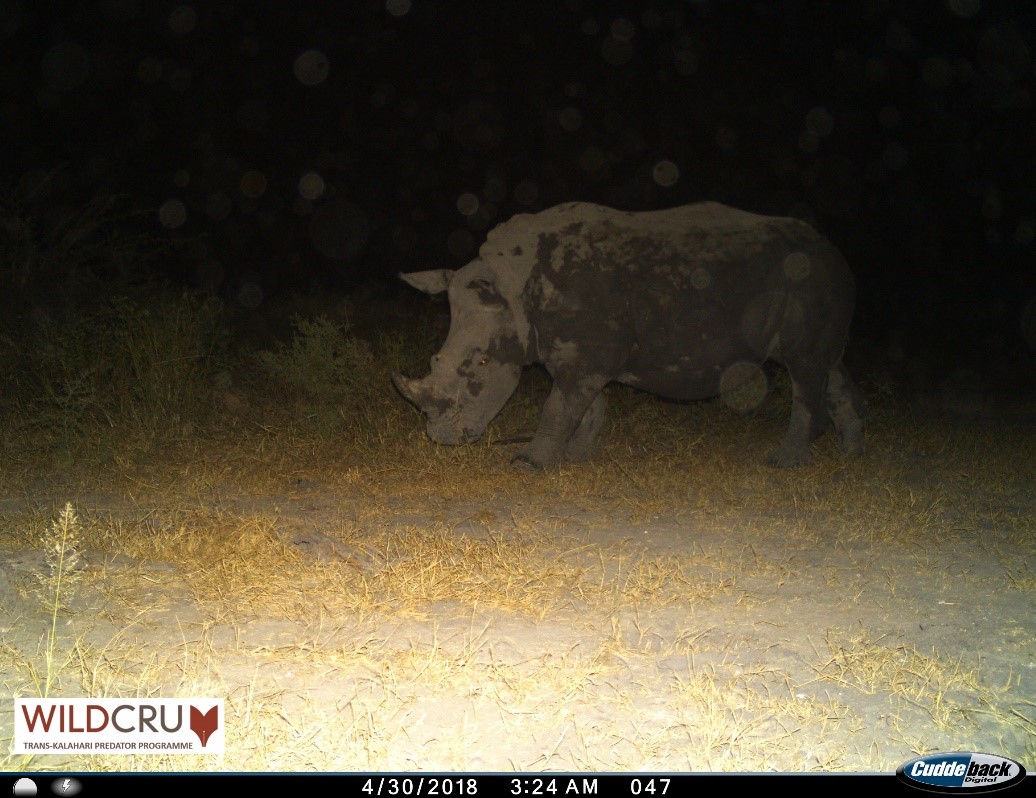 A young and boisterous white rhino bull pushed this particular trap over at least three times during the survey
A young and boisterous white rhino bull pushed this particular trap over at least three times during the survey -
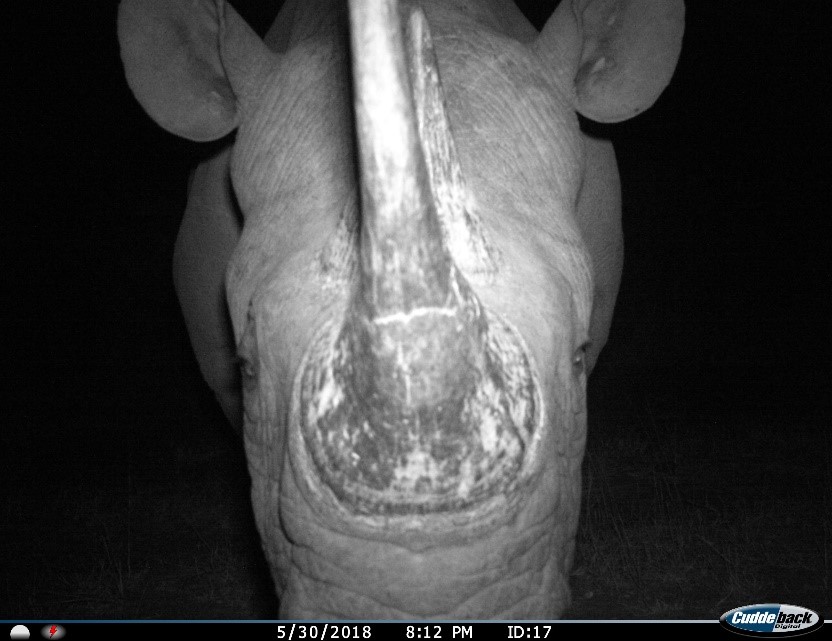 A unique view of a curious black rhino
A unique view of a curious black rhino -
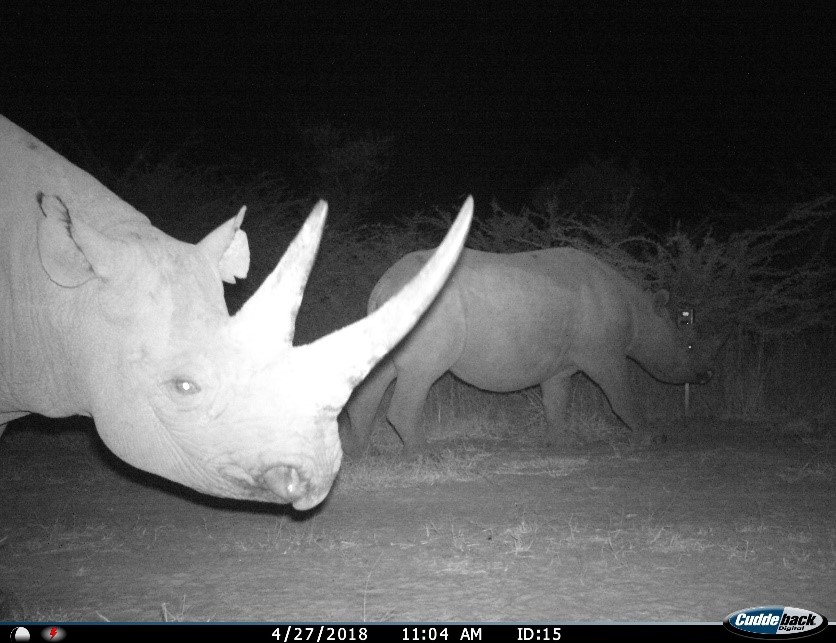 A black rhino mother and calf. The ear notches on the mother help us identify her
A black rhino mother and calf. The ear notches on the mother help us identify her





